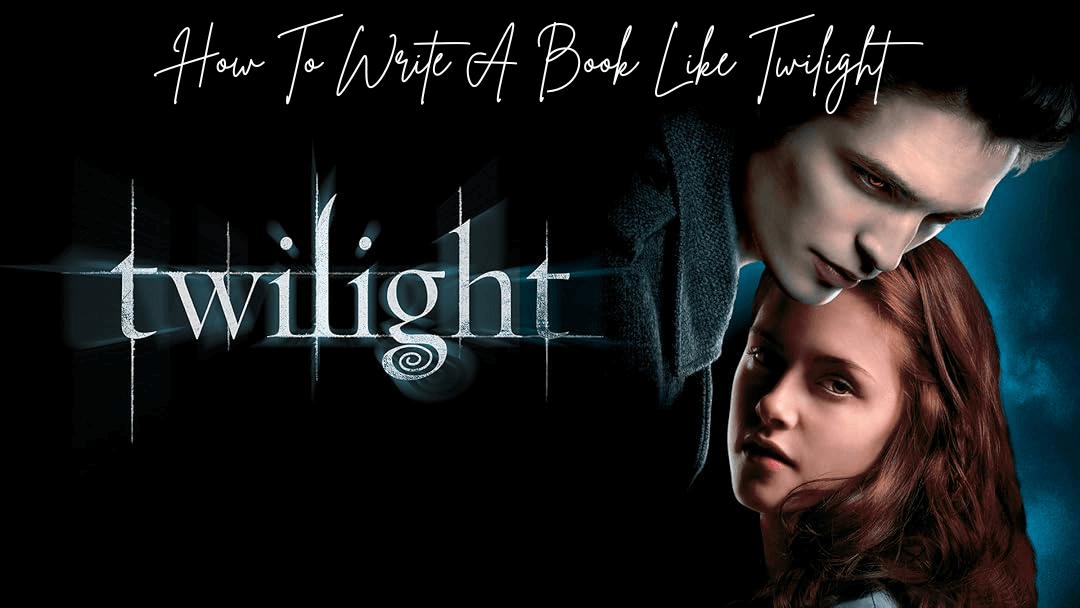
We all remember the Twilight era. Whether you were a devoted fan or a casual observer, it was impossible to ignore the impact Stephenie Meyer’s vampire romance had on a generation of readers. With its intense emotions, unforgettable love triangle, and misty small-town setting, Twilight became a global phenomenon—and for many writers, a source of inspiration.
If you’re hoping to write a book that captures readers the way Twilight did, you’re not alone. But it’s not just about including vampires or crafting a teenage love story—it’s about understanding the emotional heartbeat of the story and how it connected with millions of readers.
Let’s take a deeper look at the storytelling elements that made Twilight work—and how you can use them to shape your own unforgettable novel.
Table of Contents
ToggleKey Storytelling Lessons From Twilight
While Twilight may seem like a simple love story on the surface, its emotional depth and relatable voice are what made it stand out. If you want to write a book with a similar impact, it helps to break down the core storytelling techniques that gave Twilight its staying power.
1. Understand What Made Twilight Work
Before trying to replicate the magic, it helps to understand why Twilight connected so deeply.
- It wasn’t flashy prose or complex worldbuilding. It was emotion.
- The story honed in on longing, obsession, and inner turmoil—things many teens relate to.
- Meyer wrote in a straightforward style that made the story accessible, letting the emotional stakes shine.
- And of course, the classic love triangle added fuel to the emotional fire.
If you’re aiming to write a book in the spirit of Twilight, start by asking: What emotional experiences do I want readers to feel?
2. Craft a Relatable Yet Mysterious Protagonist
Bella Swan is often called a “blank slate,” but that’s not necessarily a flaw. Her introspective, uncertain personality allowed readers to project their own thoughts and feelings onto her.
When writing your protagonist:
- Don’t be afraid to make them ordinary—but give them depth.
- Let them reflect on their fears, hopes, and insecurities.
- Use first-person narration (if it fits) to show their emotional world.
- Add subtle traits that make them unique, even if they’re understated.
The goal isn’t perfection—it’s relatability. Readers should feel like they are your main character, or at least deeply understand them.
3. Build a Tension-Filled Love Story
The romance in Twilight was more than just attraction—it was obsession, conflict, and danger.
To create a similar dynamic:
- Let the romantic interest be both appealing and off-limits.
- Don’t rush the relationship—build longing, glances, hesitation.
- Create stakes: What could the character lose by falling in love?
- Add emotional push-pull (e.g., “I love you, but I can’t be with you”).
Remember, readers don’t just want the couple to get together—they want to feel why it’s so hard for them to do so.
4. Add Fantasy That Enhances (Not Distracts)
Twilight didn’t overload readers with fantasy lore. It introduced the supernatural gradually—through Bella’s curiosity, suspicions, and finally, her discovery.
When writing fantasy elements:
- Tie the supernatural to character development, not just plot.
- Reveal the fantasy world through the protagonist’s experience.
- Keep the worldbuilding simple and emotional—less about rules, more about consequences.
- Let the fantasy reflect real-life fears or desires.
Fantasy in this style works best when it feels grounded in emotional reality.
5. Create an Intimate, Reflective Setting
The town of Forks wasn’t just a backdrop—it set the entire mood. The rain, forests, and quiet roads matched Bella’s introspective nature and gave the story a sense of closeness.
Your setting can do the same:
- Use the environment to mirror your protagonist’s inner world.
- Choose a setting that feels emotionally charged or symbolic.
- Limit the size or scope—small towns, close communities, or isolated places can heighten tension and intimacy.
- Use weather, light, and space as storytelling tools.
Readers should feel the setting just as much as they imagine it.
6. Write Unapologetically for Your Target Audience
One reason Twilight succeeded was that it didn’t try to impress critics—it spoke directly to teenage girls. And that sincerity paid off.
When writing your book:
- Know who you’re writing for, and focus on their emotional needs.
- Don’t water down your story to appeal to everyone.
- Embrace intensity, passion, and honesty—even if it feels “too much” for some.
- Focus on voice over perfection—readers connect more with authenticity than flawless structure.
Writing for a specific audience doesn’t limit your story. It deepens it.
7. Learn From Both Praise and Criticism
Twilight was loved—and ridiculed. That’s part of what happens when your book reaches a large audience. But there’s value in looking at both the applause and the backlash.
Constructive takeaways:
- Some readers wished Bella had more agency—how can you give your characters clearer choices or motivations?
- The pacing was slow for some—can you tighten scenes without losing emotional weight?
- Love triangles can feel overdone—can you bring a fresh twist to the trope?
Criticism isn’t always an attack—it’s an opportunity to reflect, refine, and grow. But never let it silence your unique voice.
Conclusion
Writing a book like Twilight isn’t about copying vampires or high school angst—it’s about crafting a story that hits readers where it matters most: the heart.
Stephenie Meyer’s success came from tuning into real emotions and building a world around them—one filled with longing, danger, and devotion. If you can do the same with your own voice and story, you’re already on the right track.
So go ahead. Write the book you’ve been imagining. And let it be just as bold, just as vulnerable, and just as unforgettable as Twilight was for its readers.




